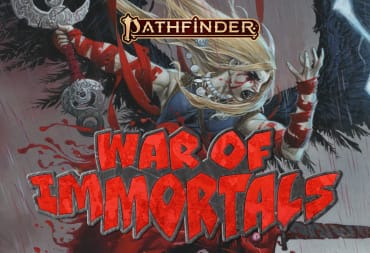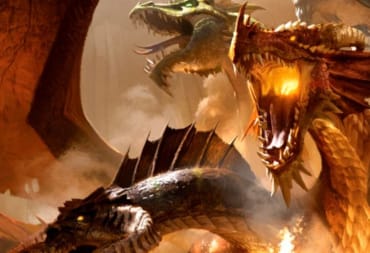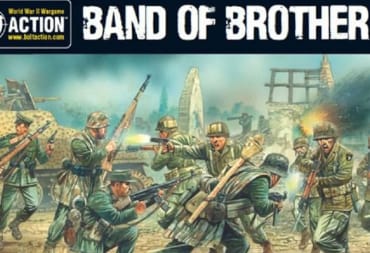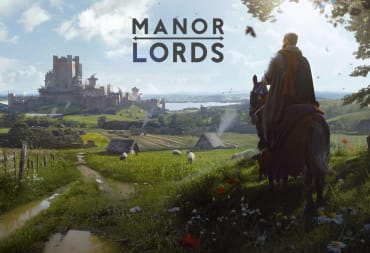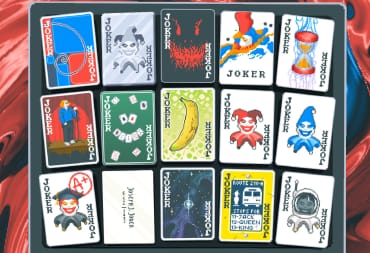Today Van Richten's Guide to Ravenloft is out for D&D 5e. This sourcebook collects within it information on the Domains of Dread, horror-themed realms for players to explore, as well as the official publications of Gothic Lineages, new subclasses, and ideas for DMs to scare their players. While there is more than enough information about all of the different types of horror you can immerse your players in, from the Vampire ridden lands of Barovia to I'Cath the dreaming domain, what we're going to look at here is some of the fun and interesting DM tools that are provided to help immerse your players in fear.
1. Let the party hear from a survivor
Every good horror movie starts with you getting a taste of the horror. In a movie about a haunted house like The Grudge, you get to see what happened to the previous owner, in slasher films you get to see the poor college kids that the looming figure carved up first. You don't want to pull the players too far from their character and describe events in any intense level of detail as if they're watching a cutaway as that can ruin the immersion. Instead, you can use someone who survived the experience that the players are about to encounter to tell the party. The survivor doesn't need to give away all of the Dark Lords' secrets but can give the players enough information to feed their interest and propel the plot forward.
Following the directions of the Innkeeper the party finds themselves standing in front of the old shack the Innkeeper pointed them towards. This derelict building sits distinct from the rest of the town, keep away signs posted on the door and fence and a small garden with just enough growing to feed a single person you discern that old Wilfred is as much of a loner as he was painted to be. Barely taking a step over the property line a stringy human man with a rough beard and scars all over his face bursts through the door
"You won't take me again" he yells at the party "I've had enough of your torture, you can't have my brain"
The DM Tools section of Van Richten's Guide to Ravenloft has plenty of suggestions about how to use survivors including how to play them, and the different classes they can play; Apprentice, Disciple, Sneaks, and Squires. These classes a reminiscent of the sidekick mechanics, it's a way to build up an NPC character without needing to go as far as building them their own stat sheet, but not as little as using a 4 hp Commoner stat block. These survivors even have their own talents and abilities.
2. What is a Dark Lord to a level 17 God?
Dungeons and Dragons at high levels can be a blast. Paladins cleaving rocks like butter, wizards bending reality to their whim, Rogues seemingly vanishing from all but your mind. Obtaining new powers is a fun and integral part of the experience but in a horror setting it can do the opposite of what you want. If you can summon a demon with the flick of your wrist, then how scary will a creepy carnival be?
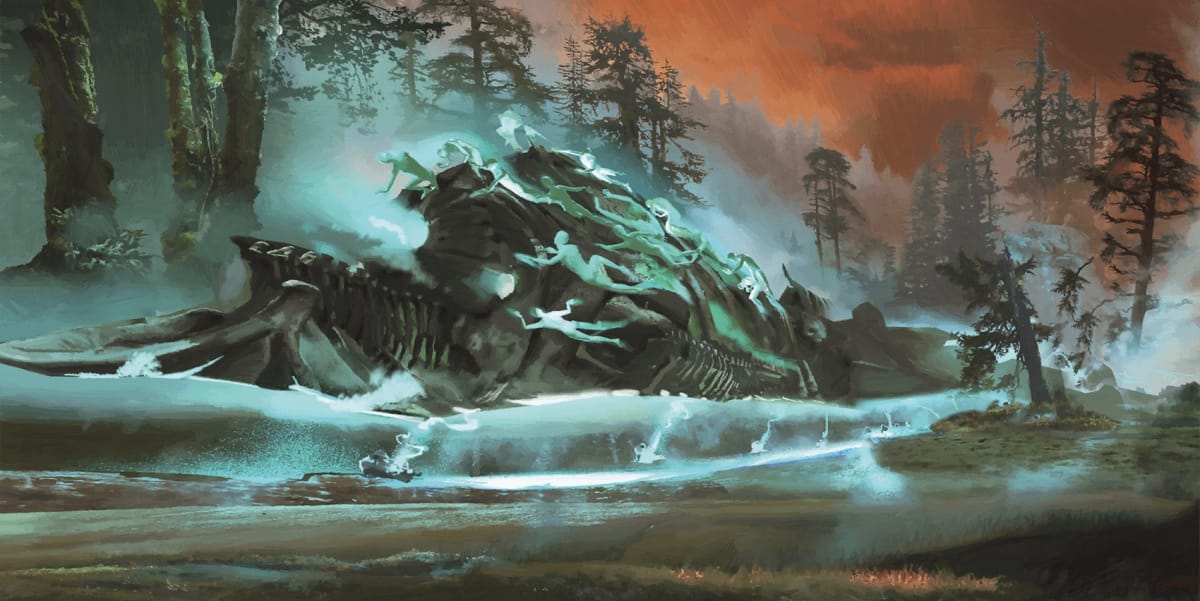
Running one-shots/small campaigns for players you might normally steer clear of the 1-3 level range, at first even I was a bit disappointed that the included House of Lament adventure, was for 1st level players. Reading through it, and understanding just how squishy even a Goliath is at that level the better an idea it sounded. You can use low-level play to make players feel some pressure as to whether they should use a spell or ability now, or whether it will be something that they'll want to be using later. Your party can have opportunities for short or long rests along the way, but while they might regain health and spell slots they could also realize they're missing an important item or wake up in a different location to where they fell asleep.
3. Take your time describing the world
A lot of what makes horror horrific is the atmosphere it creates. Watching a horror film and experiencing a long and slow walk down a hallway with a musical score filled with rising string instruments is going to build tension and get your heart racing. This is just as important when describing locations for your horror settings. Knowing that your trying to describe a tense environment might also have you picking different elements to emphasize in a scene.
If you have a hallway with simple elements; two exits, a table with a few books and photographs, and a mounted Owlbear head on the wall, if the party was expecting bandits you might focus on the size of the kill and books on knives, if it was instead a vengeful spirit you were expecting to see maybe the eyes have been scratches out of family pictures.
Don't quickly read through your description of a location just so the party can get back to the game. Take pauses in your description, forcing the players to hang on to what you're saying next. If the party is filled with players who enjoy really getting into the details of the world you can also use description to allude to what they're about to face.
4. Instill Seeds of Fear
Another neat DM Tool that is brought up in Van Richten's Guide to Ravenloft is Seeds of Fear. Working similarly to a character's flaws these are triggers that the player knows when encountered will scare their character. Some examples given are a fear of storms, tight spaces, or that feeling a reflection is looking back at you. Your character doesn't need to start, or end the session with any Seeds of Fear but can be used to grow or shape your character's growth.
Through the doorway, you see the splendor of the old Pharaoh's hidden burial chamber. Amidst piles of gold, silk, and other finery you see what you've been searching for. On the far wall, past the ornate sarcophagus, is a small table with an unassuming pot sitting on top. With the sigil of a golden scarab on its side, you know this is the Canopic Jar that Ankhtepot has been searching hundreds of years for. As you pick it up and brush off some of the collected sand and dust you hear a loud snapping of wood.
Turning around to look in the direction you came you have just enough time to see a large rock sliding in front of the doorway before you're left in complete darkness...
For a character who already hates the dark, this could trigger their Seed of Fear. Alternatively, this might be just the experience that a character has to suffer through to instill within them that fear. If they have a fear of the dark, but a personality trait of theirs is to be protective and they see another player is having a far worse time than them then they might be able to well up the courage to put on a brave face and lose that Seed of Fear.
Normal character growth can be achieved after a dozen character sessions, but these very easily defined aspects of a character can be used for quick growth. Obviously, if everyone in the party is constantly gaining and losing fears the effect will be lost so still use it in moderation.
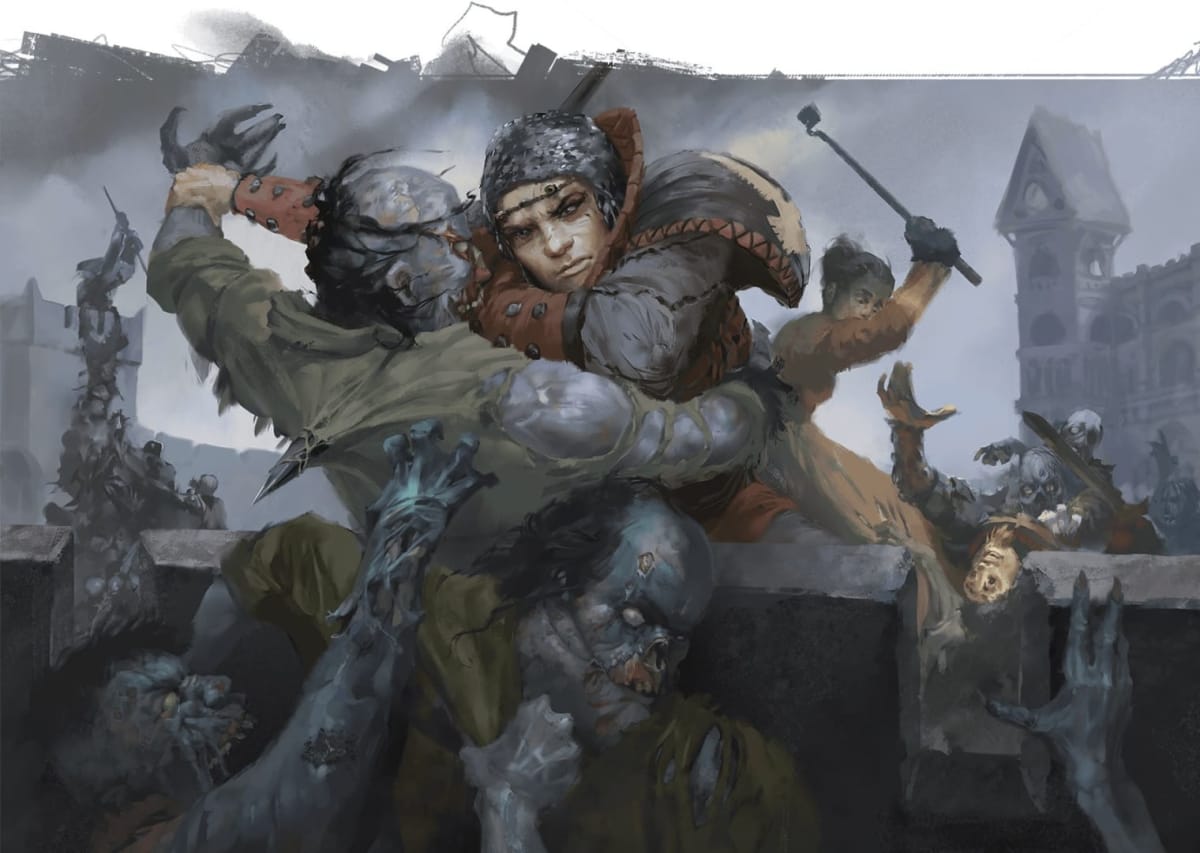
5. Encourage your players to lose themselves in the fear
Dungeons and Dragons is a two-way street. You hope that the amount of effort you're putting into planning, roleplaying, describing the world, and understanding its aspects will be reciprocated by the players. You're meant to be getting lost in different realms of horror so encourage your players to get lost in it. Make sure players are aware of what their Seeds of Fear are, and plan for their different personality traits too. If the player thinks the character should be terrified and runs away or into more danger separating themselves from the party reward your players for getting into the theme of things. Time to give out some DM inspiration!
6. Remind the players about the new Gothic Lineages
This sourcebook also brings about the official release of the three Gothic Lineages; Dhampir, Hexblook, and Reborn. The lineages are unique in that they're somewhat of a modifier upon your characters' original race. You don't just have to be a Reborn, but instead an Elf Reborn. The lineages are their own race but have a feature called "Ancestral Legacy" that instructs you to keep the skill proficiencies and movement speeds of those races. If you choose to forego your Ancestral Legacy then you just get to pick two skills to be proficient in. This shows that you've changed from one race to another.
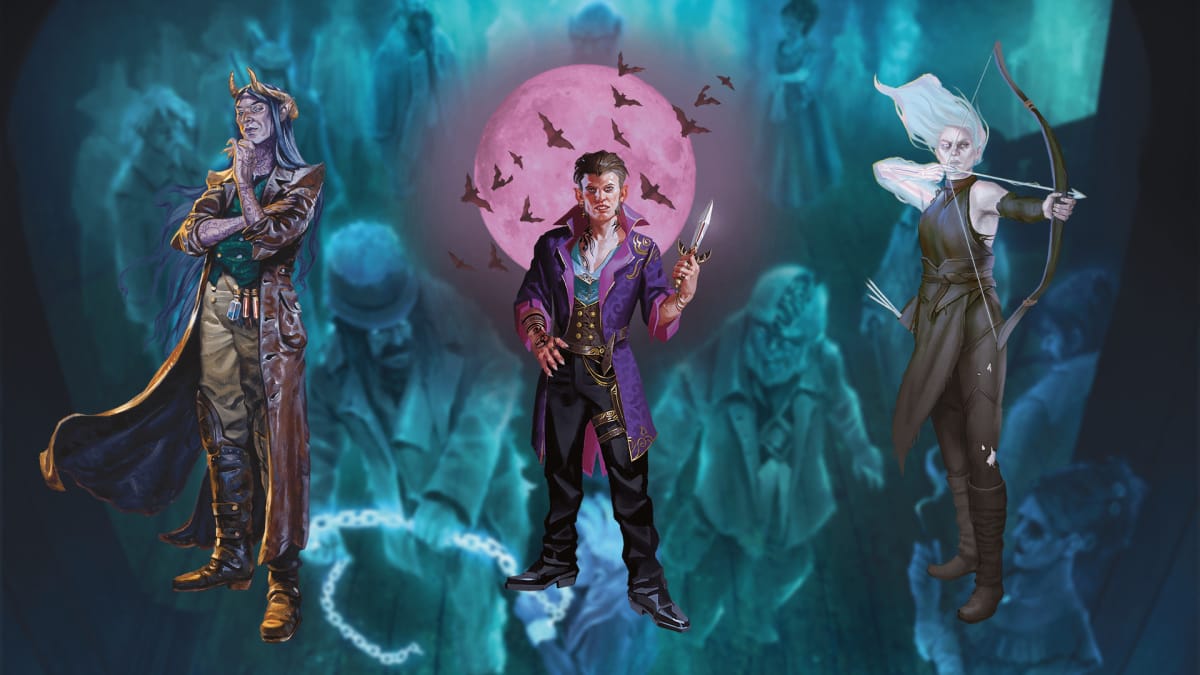
These lineages can come into play at the beginning of your adventure, your party might be a group of recently turned Dhampir who are trying to stay on Strahd's good side while also searching for a way to free themselves from the desire to drink blood, it might also be something that you pick up along the way altering who your character is to their core. Make sure if you're playing in a setting that might have these kinds of creatures that you talk with your players about whether that's something they'd be interested in. The sourcebook lists which Domains of Dread you're most likely to encounter these creatures.
7. Take a page out of Tasha's book to up the ambiance
Chapter 4 of Tasha's Cauldron of Everything has an entire section dedicated to Supernatural Regions. This section is all about additional rules you can use to really help nail home how far you are away from home, and how different the other realms can be. While we won't be delving into the angelic regions of the Upper Plains and how that can positively affect a player we're going to be looking at the Haunted regions, more specifically the Haunted Effects table. With a variety of suggested triggers like a creature becoming frightened, a party member is on their own, or the clock strikes midnight the DM can roll percentile dice to determine a strange effect that takes place.
A few of my favorite entries in the Haunted Effects table are:
- 26 - 30 One creature's shadow acts independently for the next 24 hours. The shadow acts out of sync with its owner, perhaps dramatically choking or trying to murder another shadow
- 46 - 50 A nonviolent ghost appears, perhaps a pet, accident-prone child, or dismembered big toe, appears and follows one creature for 24 hours before disappearing
- 76 - 80 During the next sleep one character will receive a vision as if targeted by the dream spell. The dream is brief and unsettling but can reveal an element of the environment's history.
While there are positive and negative effects to be had from this table even the worst ones aren't that bad. The randomness of horrific omens does help to keep events fresh and fun.
Extra DM Tip! - Horror doesn't have to mean bringing up someone's actual nightmare!
It's fun to enjoy a good scare, but it's always good to know where your level of comfortable fear is compared to another at your table. Bring up with your players what kinds of horror they enjoy, and what they definitely want to stay away from. I know in my party I have a number of players who enjoy tales of cosmic horror, and that another player even in regular sessions doesn't like too much descriptive body horror. Make sure you're on the same page as your players so you don't get too deep into a scenario and you have a player disliking it or being made to feel uncomfortable. That can be an awkward position for anyone to be in, not wanting to stop their friends from enjoying themselves, but combat with multiple zombie clowns just is pushing them to their limit.
Van Richten's Guide to Ravenloft covers Body Horror, Cosmic Horror, Dark Fantasy, Folk Horror, Ghost Stories, Gothic Horror, and even briefly dabbles into Disaster, Occult Detective, and Slasher Horror. While the horror that you and your party settle on might not be your number one choice if it's good for the whole party then that's what you want.
Have a tip, or want to point out something we missed? Leave a Comment or e-mail us at tips@techraptor.net

